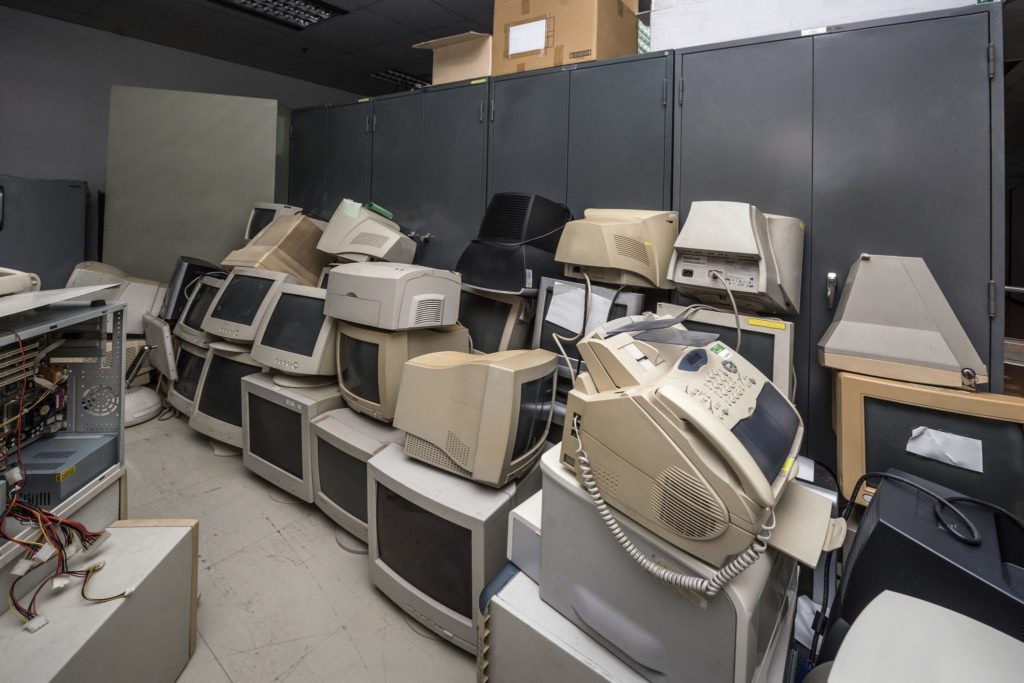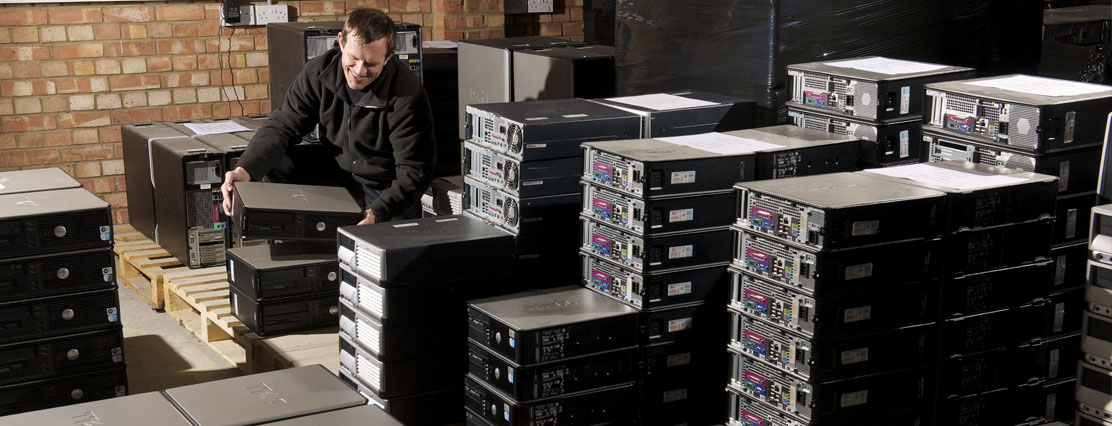In recent years, the demand for new computers for businesses has been increasing steadily and substantially. Ironically, because of the growing need for more powerful hardware to run complex business processes, computers have an average lifespan of just a few years. As a result, organizations are facing a dilemma — a surplus of old equipment. For companies that are able to dispose of their computers,
environmental problems tail them from behind.
And then the pandemic struck.
The rapid change in consumers’ purchasing habits and the disruption it caused across industries required companies to use the latest in computer systems and mobile devices, with updated software applications. This forced companies to buy more robust computers, laptops, and mobile devices capable of accommodating remote access technologies while running enterprise-level applications. Yet again, the old problem of the surplus of old computers resurfaced.
There are a few ways of solving the problem. One is to simply dispose of old computers at a dumpsite. Two is to donate them to charitable or educational institutions. Three is to sell them. However, all of these options pose a lot of risks for business. There is one viable solution that can address many of these risks — ITAD.
IT Asset Disposal and Data Destruction
ITAD, or IT asset disposal, is the process of safe and proper disposal of old IT equipment used in businesses. Aside from computers, ITAD programs dispose of laptops, servers, printers, scanners, and even mobile devices such as smartphones and tablets. Organizations must ensure that their IT assets are disposed of without data remnants. They are also required to dispose of equipment following industry
regulations.
Aside from the growing volume of IT equipment from organizations that needs to be disposed of, there are several factors that would increase the need for ITAD today and in the coming years. ITAD will be boosted by “Smart Factory” environments, the Fourth Industrial Revolution, the Internet of Things (IoT), the growing use of massive data centers, and the increasing adoption of advanced technologies. Because of this, Yahoo Finance further explained, the ITAD services market is estimated to balloon to $24.5 billion by 2026.
While the process of ITAD involves different kinds and levels of procedures, data destruction and sanitation is its largest segment. Every day, 2.5 billion gigabytes are generated around the world. This, plus new fines enforced by the General Data Protection Regulation (GDPR), requires organizations to securely sanitize their data from old IT assets.

IT Asset Disposal and IT Asset Disposition
IT asset disposal and IT asset disposition may have the same acronyms and related procedures, but they are different.
When IT assets are disposed of, they are first taken apart to salvage any parts that can still be used separately or reprocessed for other purposes. IT asset disposal focuses on equipment as electronic waste, which contains hazardous metals and chemicals. Because of this, asset disposal requires adherence to environmental laws.
However, before IT assets are disposed of, the data in them must be destroyed. Because of this, asset disposal also needs to follow data protection and privacy laws.
On the other hand, when IT assets are dispositioned, they are simply transferred to another business or individual for reuse. Just like with asset disposal, dispositioned assets are first taken to a data
destruction procedure to ensure sensitive data are removed before anyone can use particular equipment.
Unfortunately, ITAD is not prioritized by companies. Lack of an ITAD strategy could put businesses at risk when IT assets are reused. IT leaders must know the gravity of not being able to dispose of IT assets properly. Here’s why you should adopt an ITAD strategy for your business.
Protect Sensitive Data
Customers, B2B clients, and business partners put their trust in you that you will not use their data for other purposes than they were first required. They trust that you will keep their data away from data breaches and unauthorized use.
With an ITAD strategy, you will be able to delete and destroy sensitive data from old IT equipment before they are disposed of. If they are not properly destroyed, you can lose control of your company’s sensitive data, and they can be recovered by your competitors. They can also be subjected to data theft. In some cases, they can be used for identity theft or to commit fraud.
Your IP law firm can also recommend that you implement an ITAD strategy to protect your intellectual property, which can be recovered from disposed of equipment. You could be violating privacy laws without knowing it until you are slapped with fines.
Environmental Impact
Businesses have a social responsibility to keep the environmental impact of their processes and waste to a minimum. An ITAD strategy can help your company reduce its environmental impact through the regulated disposal of electronic wastes. In fact, according to an ICT-focused publication, Channel Futures, having an ITAD strategy can help businesses establish their environmental intentions.
Disposal of old IT equipment isn’t something that should be taken lightly. All workplace technology anyway, contains critical data and customer information. If those data are accessed by outsiders, it can damage your business. You can even get sued by your partners, customers, and government agencies. To prevent all of this, take IT asset disposal seriously and implement it for your business.

